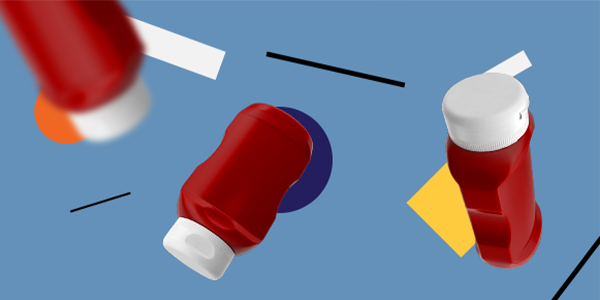Based on A Behavioral Approach to Value Propositions
It’s Memorial Day weekend. You are thinking of hosting a BBQ in your backyard and inviting your friends and family over for a good ol’ fashioned cookout. Hamburgers and hotdogs are the obvious choice. As you’re on your way to the grocery store you make a mental list of all the ingredients you need for an epic weekend.
Finally, you make your way to the condiment’s aisle after adding one too many ice cream pints to your shopping cart (in your defense the Ben and Jerry’s cookie dough ice-cream was on sale – you couldn’t pass that offer up) and you realize that you’ve automatically reached for the Heinz ketchup bottle, over other, equally delicious, even cheaper, ketchup brands. Why?
It's what you’ve always done.
Maybe you think it’s because Heinz tastes the best, or it’s your favorite, but when is the last time you even tried another ketchup? How did the decision to buy Heinz become almost automatic? And why is one product brand preferred over another seemingly equal brand? What gives a brand its ‘sticky’ factor – how we know which brand we prefer without needing to think twice about why.
Today, brands are at their height of competition. In an era marked by globalization, made possible by increased digital interconnectivity, there are hundreds of options out there for the product/service you are looking for. All it takes is a quick Google search for ‘Black T-Shirt', to find yourself with a forty-page online catalog of seemingly identical black t-shirts from companies all the way from China to New York. With product availability (setting aside supply chain delays for the moment) and ease of purchase on an upward trend, companies are competing with the world at large. This means that brand salience can be as important as the product/service itself.

What makes your product stand out is how you sell it. Hence, product positioning will make the difference between people's decision to buy Heinz ketchup over other ketchup brands. I say ‘other’ because I’m at a loss when it comes to thinking of alternatives to the infamous Heinz ketchup – my point exactly.
Value propositions explain how a product/service solves a need. A good value proposition will articulate the reasons why a consumer should buy the product. An excellent value proposition will tell a consumer why they should by their product and not that of another brand.
It all sounds nice on paper, but how do you actually articulate why your brand is the better brand, and how do you make it believable? This may come as a shock, but claiming, for example, that your toothpaste is ‘the best toothpaste ever’ is not going to convince customers that your toothpaste is in fact the ‘best ever’. The key is to clearly communicate what differentiates your brand not only tangibly but intangibly.
For this we need to get into the mind of the consumer. Understanding the psychological needs of your target audience will allow you to build a brand that matches these associations. A value proposition that correctly addresses a consumer’s psychological needs in a consistent manner, is a good contender to become a heuristic (like buying Heinz over other ketchup brands).

A heuristic allows people to quickly and easily decide what to buy. Rather than spending considerable time thinking about what they want, they can simply go with their standard option – a snap judgement that can save considerable time and effort.
But how does a brand achieve this level of automaticity? First, we need to determine what heuristics consumers are already using. Whether buying a new car, or going to a new hairdresser, there are cues we all use (consciously or not) that help us zero in on a preferred option. Connecting your brand to the heuristics people use – the features that consumers truly value – can help ensure you land at the top of that list.
BEworks helps companies create a value proposition that connects to customers through a tried and true scientific method. We start by identifying a set of factors that may influence a consumer’s buying decision (taste, price, comfort, etc.). Through a series of forced choice tasks, that varies how each option rates on those initial factors, we can reveal the intrinsic factors that consumers care about most at the time of purchase. With this in hand, we help companies develop strategies that connect to customers revealed preferences. A value proposition that is executed correctly, with appropriate language, tone, and imagery, among other creative assets, allows both the product/service and the brand, to secure a place in our emotional memory. And voila, you’ve created a heuristic.
In a world overrun by marketing ads, product placements, and brand logos, succeeding in making a brand ‘stick’ takes more than just guts – it takes science. Brands that create mental shortcuts make it easy for people to find just what they need. And this is exactly what behavioral science is all about.
BEworks has worked with multiple companies over the years from Baby-Ark, a luxury baby car-seat brand, to a major cosmetics brand, helping them create value propositions based on consumer psychology.
👉Want to learn about our approach to creating brand value?
Download our guide to creating value propositions
Thinking about getting a project off the ground?










